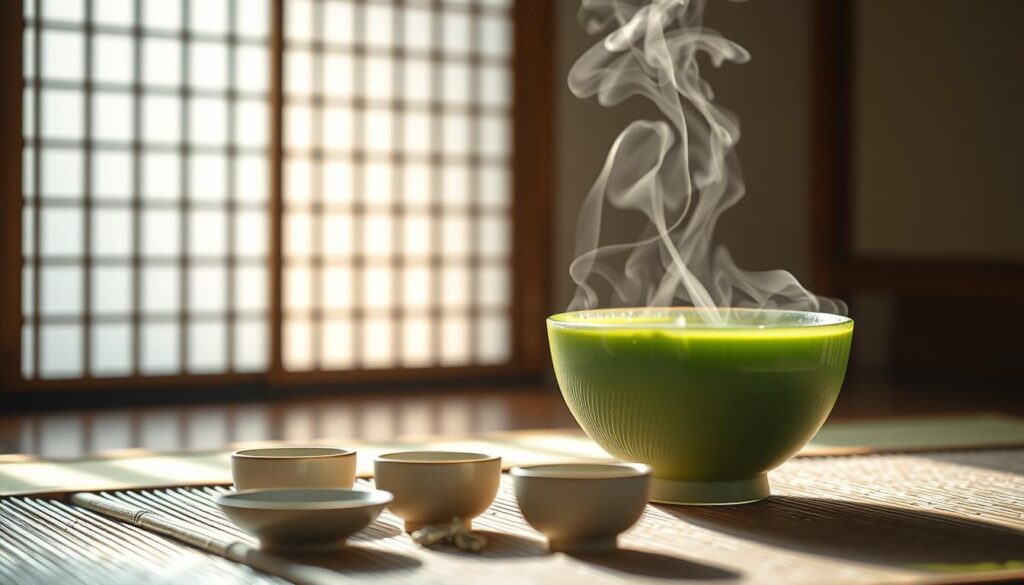Physical Address
304 North Cardinal St.
Dorchester Center, MA 02124
Physical Address
304 North Cardinal St.
Dorchester Center, MA 02124

Surprising fact: many adults don’t meet the daily vitamin C target, yet a 100 g red bell pepper has nearly three times the vitamin C of an orange.
I want to share how a balanced pattern of eating helps my immune system stay ready. I focus on colorful fruits, leafy greens, whole grains, yogurt, and oily fish because these choices supply vitamins, zinc, selenium, and helpful bioactives.
No single item prevents illness. Still, meals rich in nutrients support immune function and overall health. Small swaps—like choosing a red bell pepper over an orange for vitamin C—can make a real difference in my daily diet.
I also pair food habits with sleep, regular movement, stress care, and sensible alcohol choices. That whole-body approach keeps my immune responses more resilient and practical for life in the United States today.
I treat my immune system like a team of workers that needs steady fuel and clear direction.
The system is a network of cells, tissues, and organs that spots threats and coordinates responses. White blood cells are on the front lines, so I eat to support their production and effectiveness.
My aim is steady support, not a quick fix. I rely on a balanced diet, daily movement, regular sleep, stress care, current vaccines, and avoiding smoking to keep my body resilient.
I avoid miracle claims. No single food cures disease. Instead, I choose nutrient-dense options that help immune function and pair them with sensible prevention.
These practical ways keep me patient and consistent. Small, repeatable habits matter more than dramatic changes.
| Factor | What I do | Benefit |
|---|---|---|
| Diet | Colorful, varied meals | Provides vitamins for immune cells |
| Movement | Short daily walks | Supports circulation and function |
| Sleep & Stress | Consistent bedtimes, breaks | Helps recovery and resilience |
| Prevention | Vaccines and hygiene | Reduces exposure to threats |
I focus on everyday pantry picks that give my immune system steady support.
My list centers on variety: berries, leafy greens like kale, red bell peppers, garlic, ginger, and turmeric all supply vitamins, minerals, and bioactives that help immune cells do their job.
I rotate yogurt with live and active cultures (vitamin D–fortified when possible), nuts and seeds for vitamin E and selenium, and oily fish for omega-3 fatty acids.
Small swaps and regular variety keep my meals interesting and help boost immune resilience more reliably than chasing any single ingredient.
Citrus fruits are my go-to for a quick vitamin lift that fits into any part of my day. I keep them on the counter so reaching for a snack is easy and visible.
Vitamin C is linked to the production and function of white blood cells that help fight infection.
Most adults aim for about 75–90 mg per day. I try to meet this with food first and avoid exceeding 2,000 mg from supplements.
I peel an orange as an afternoon pick-me-up or toss grapefruit segments into yogurt bowls.
I squeeze lemon or lime over salads, fish, and cooked greens, and I add a splash to water when I’m short on time.
“Vitamin C supports white blood cells and helps keep my cells ready during busy weeks.”
| Source | Typical vitamin C (mg/100 g) | How I use it |
|---|---|---|
| Orange | ~45 | Snack or yogurt mix-in |
| Grapefruit | ~31 | Juice or segments in salads |
| Lemon / Lime | ~53 (lemon) | Squeeze on dishes, water |
| Red bell pepper | ~128 | Roast or raw as a vitamin-rich swap |
Short note: I don’t rely on citrus alone to prevent infection, but these choices help boost immune support in my weekly routine.
Red bell peppers are my go-to crunchy swap when I want more vitamin C and less processed snacking. A 100 g serving has about 128 mg of vitamin C—nearly triple a Florida orange—so they give a real boost to my daily routine.
I use them across meals to support immune function and skin health. I toss strips into omelets, fajitas, and sheet-pan dinners so my cells get steady nourishment without extra effort.
Small habits make big differences. I dice peppers for salads, roast a pan for weeknight meals, and pair slices with hummus for a quick, colorful snack that feels fresh.
Bottom line: Adding red bell peppers made getting more immune-supportive vegetables an easy, everyday habit that helps my system and overall health.
Leafy choices like spinach, kale, and broccoli form a simple base I return to for steady nourishment.
I rotate these greens because they supply A, C, and E along with fiber and antioxidants that help my immune system work well.
I steam or microwave broccoli briefly to keep texture crisp-tender and to preserve its high vitamin content.
A quick sauté makes spinach’s vitamin A easier for my body to use and lowers oxalic acid so I absorb more nutrients.
I often massage kale with olive oil and lemon when I eat it raw, or toss it into soups and sheet-pan meals for softer leaves.
| Vegetable | Key vitamins | Portion cue |
|---|---|---|
| Broccoli | Vitamins A, C, E; fiber | 2 spears (lightly steamed) |
| Spinach | Vitamin A; iron; antioxidants | 2 heaped tbsp cooked (quick sauté) |
| Kale / spring greens | Vitamins A, C; fiber | 4 heaped tbsp cooked or massaged raw |
Simple portion cues and mixed preparations help my system stay steady. Consistency with these vegetables feels practical, and my immune function seems to benefit when I make them routine.
Berries pack a lot of nutrition into a small, easy snack that I reach for often. They deliver vitamins, minerals, and phenolic compounds that reviews link to benefits across several body systems, including the immune system.
I aim for a typical fruit portion of about 80 g—a palmful or roughly seven strawberries—to keep portions simple. A mix of blueberries, raspberries, and blackberries gives a wider range of polyphenols and flavor notes.
Practical habits make berries work for me. I keep frozen berries for smoothies, batch-cook compotes with a little honey for oatmeal, and toss fresh berries into salads with leafy vegetables and a citrus vinaigrette.
“Small, colorful servings of berries are an easy way to support cells that keep my immune responses working well.”
A small cup of cultured yogurt or a glass of kefir often starts my morning with steady nutrition. I favor plain varieties that list live and active cultures on the label and choose vitamin D–fortified options when available.
These choices help supply protein, vitamin D, and microbes that may stimulate immune cells and support immune system balance as part of a varied diet.
I keep yogurt plain and add berries or a light drizzle of honey so I control sugar while getting nutrients. I read labels and rotate brands to confirm the presence of live cultures and look for added vitamin D.
Kefir is my quick pour-and-go pick for live cultures and tangy flavor. I also use kimchi or sauerkraut as toppers for grain bowls and eggs.
“Daily, small servings of cultured foods add protein, vitamins, and live microbes that fit into a balanced diet.”
I keep small packs of nuts and seeds handy so snacks stay simple and nourishing.
Almonds and sunflower seeds are my go-to picks for steady nutrient support. Almonds deliver a big dose of vitamin E; about half a cup (~46 almonds) covers an adult’s daily need. Sunflower seeds add vitamin E plus phosphorus, magnesium, and B6. They also supply selenium—one ounce gives nearly half the daily selenium most adults need.
These minerals and fats help regulate and maintain immune system function. I portion snacks into small containers so I don’t overdo calories while staying satisfied.
| Item | Nutrient highlights | Typical use |
|---|---|---|
| Almonds | High in vitamin E, healthy fats | Desk snack, nut butter on toast |
| Sunflower seeds | Vitamin E, selenium, magnesium, B6 | Salad topping, sprinkled on oats |
| Mixed seeds & nuts | Varied minerals and healthy fats | Trail mix, baking add-in |
“Small handfuls of nuts and seeds help support immune resilience while keeping me full between meals.”
I build my weekly meals around one well-cooked portion of oily fish to keep omega-3 intake steady.
Salmon, tuna, mackerel, and pilchards are my go-to choices because they supply omega-3 fatty acids and often provide vitamins A and D.
I aim for about 140 g cooked each week—that single serving helps cover fatty-acid needs and adds vitamin D that works alongside sunlight and fortified yogurt.

I batch-cook salmon, then flake it over grains with lemon and olive oil for quick lunches.
On plant-based days I use ground flax, chia, and walnuts to keep omega-3 fatty intake steady. Fortified cereals and soy beverages also help bridge gaps when I’m out of fish.
“Omega-3s are part of a bigger picture; they help cell membranes and overall immune function rather than acting as a lone fix.”
| Item | Typical role | Practical tip |
|---|---|---|
| Salmon / mackerel | Source of long-chain fatty acids and vitamin D | 140 g cooked once weekly; batch-cook for meals |
| Flax, chia, walnuts | Plant omega-3s (ALA) | Add to oats, smoothies, or salads |
| Fortified foods | Help bridge intake when fish isn’t available | Check labels for added omega-3s and vitamin D |
I reach for bone-in poultry when I want a nourishing broth that soothes and restores.
Poultry supplies vitamin B6—about a 3 oz serving of light turkey or chicken gives nearly a quarter of daily needs. That helps my cells make the building blocks they need.
Chicken soup can reduce inflammation during a cold and feels easy to digest when my appetite is low. Stocks made from bones add gelatin and chondroitin, compounds linked to gut support that may help the broader immune system.
| Nutrient / Compound | Role | Practical tip |
|---|---|---|
| Vitamin B6 | Supports cell function | 3 oz light poultry per serving |
| Gelatin & chondroitin | May aid gut and immune support | Use bone-in cuts, long simmer |
| Zinc | Needed but dose-sensitive | Aim for balanced intake, avoid megadoses |
“Simple bowls of broth and shredded chicken keep meals easy and nourishing when I need comfort and gentle immune support.”
A few simple spices in my cupboard add steady flavor and subtle health support to daily meals. I use them often in small amounts so consistency matters more than big doses.
I value garlic for its sulfur compounds like allicin. These form when I crush or mince cloves.
I usually mince fresh garlic near the end of cooking to keep more of these compounds intact. I also rub a garlic-ginger paste on chicken or tofu for quick weeknight meals.
Ginger soothes digestion and may help lower inflammation. I add it to stir-fries and make a warm ginger-lemon tea when my throat feels scratchy.
It helps calm nausea and adds a bright, warming flavor to many dishes.
Turmeric contains curcumin, an antioxidant that may modulate immune cells and support immune function. Evidence varies, and many studies are early, but small regular uses fit my routine.
I bloom turmeric in olive oil with a pinch of black pepper so curcumin is easier to absorb. I also keep a jar of ginger-turmeric paste to stir into soups when time is tight.
“These spices layer flavor while offering everyday benefits I can enjoy at almost every meal.”
| Spice | Main compounds | Practical use |
|---|---|---|
| Garlic | Allicin (sulfur compounds) | Minced late, paste on proteins |
| Ginger | Gingerols (anti-inflammatory) | Stir-fries, tea for digestive comfort |
| Turmeric | Curcumin (antioxidant) | Bloom in oil + black pepper for absorption |
A hot cup of green tea mid-afternoon helps me pause and steady my energy without added sugar.

Green tea is rich in polyphenols, and its steaming process preserves EGCG. Black tea is fermented and loses more of that compound. Research suggests EGCG may have antiviral properties and can influence immune function.
I steep for 2–3 minutes to keep the taste smooth and to protect delicate compounds. Sometimes I squeeze a little lemon for a small vitamin boost. For flavor variety, I pick sencha for grassy notes or genmaicha for a nutty finish.
The ritual is simple and calming. I brew iced green tea in summer, and I pair the cup with nuts or fruit for a balanced snack. Having a kettle and a favorite mug on the counter nudges me to make it daily.
“This short, repeatable pause helps me reset and quietly supports how my immune system responds during a busy day.”
A chilled fruit bowl with papaya and kiwi brightens my mornings and brings a gentle nutrient lift.
One small papaya can provide about 100% of daily vitamin C. It also contains papain, a digestive enzyme that feels soothing and may help lower mild inflammation.
Kiwi adds extra range: vitamin C, vitamin K, folate, and potassium. Research suggests kiwi may support white blood cell activity, which helps defense cells work efficiently.
I cube both fruits for a bright bowl and add a dollop of yogurt plus a sprinkle of seeds to make a light breakfast. I also enjoy kiwi slices on whole-grain toast with ricotta for a fast sweet-savory snack.
“This bowl feels like a treat while helping cover more nutrients in fewer steps.”
| Fruit | Key nutrients | Practical use |
|---|---|---|
| Papaya | High vitamin C, papain | Cubed in bowls; gentle on digestion |
| Kiwi | Vitamin C, K, folate, potassium | Sliced on toast or mixed with berries |
| Combo | Varied vitamins and quick energy | Prepped in fridge for snacks or post-workout |
Keep a batch ready so I reach for this colorful option when hunger hits. It’s simple, refreshing, and helps my immune system and body get a compact nutrient boost.
A drizzle of good olive oil and a mindful piece of dark chocolate often close my day on a pleasant note.
Extra-virgin olive oil is a cornerstone of the Mediterranean pattern I follow because it links to lower inflammation and steady fatty-acid intake. I cook with it for everyday sautés and use it with lemon over roasted vegetables to echo the brightness of citrus fruits I enjoy.
Dark chocolate (70–85%) brings polyphenols and small amounts of zinc and selenium that may help modulate immune responses. Because it is calorie-dense, I keep portions small and pair a square with a few nuts for texture and satisfaction.
Practical ways I use them:
Why this matters: Pairing antioxidant-rich items across meals diversifies vitamins minerals and plant compounds that help support immune balance. These choices feel indulgent but still fit my routine because they are tasty and practical.
| Item | Main advantages | Practical tip |
|---|---|---|
| Extra-virgin olive oil | Reduced inflammation; source of healthy fatty acids | Use for dressings, sautés, and finishing dishes |
| Dark chocolate (70–85%) | Polyphenols; zinc and selenium in small amounts | One small square with nuts to limit calories |
| Olive oil + turmeric | Better curcumin absorption; added flavor | Bloom turmeric in oil before roasting vegetables |
I build a foundation of daily actions that support immune balance over time.
Small, steady ways add up more than big swings. I aim for about 150 minutes of movement each week—walking, strength work, or yoga—to help circulation and overall system function.
Sleep is a priority: 7–9 hours usually makes everything else easier. I also meal plan on weekends so weekday choices fit my diet and my schedule.

I limit alcohol, don’t smoke, and keep handwashing consistent. I manage stress with brief breathwork and short breaks that I actually take. Staying current with vaccines is part of my prevention plan.
“Small daily ways to keep immune balance add up more than any quick fix.”
| Habit | What I do | Why it helps |
|---|---|---|
| Movement | Walks, strength, yoga | Supports circulation and cell function |
| Sleep & stress | 7–9 hours; breathwork breaks | Improves recovery and vitamin regulation |
| Prevention | Vaccines, hand hygiene | Reduces exposure and helps boost immune system |
A few consistent food and lifestyle moves let me boost immune resilience across the week. I focus on simple swaps and steady habits so benefits add up over time.
I plan one swap today—citrus or red bell pepper at lunch—to help boost immune vitamin intake. I also pick a yogurt with live cultures and toss on berries for a quick breakfast that supports immune balance.
Each week I aim for a 140 g oily fish dinner, a leafy-green side daily, and short movement sessions. I brew green tea in the afternoon, cook with olive oil, and season with garlic, ginger, and turmeric for flavor and gentle support.
Small, repeatable steps protect sleep, hand hygiene, and vaccine timing. Pick two ideas from this list and build from there—small actions compound into better immune health and daily function.